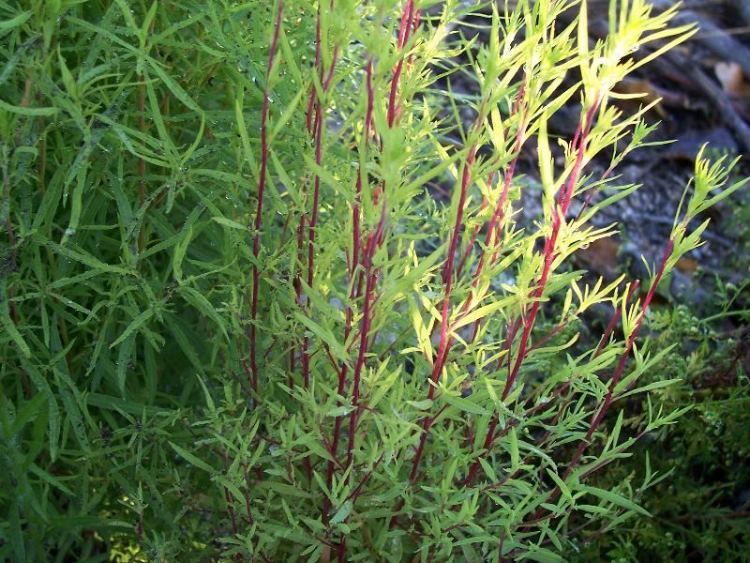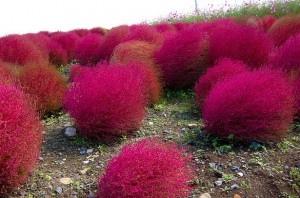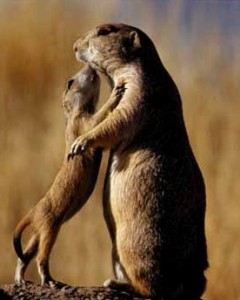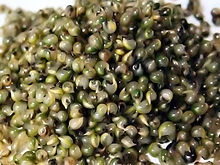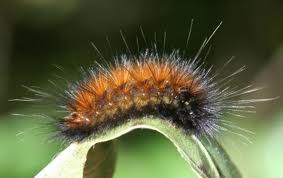Immigration brought weeds from around the old world to the new world. Quite a few of them came from southern Russia — the grassy steppes — to the prairies of middle America. Among them was Kochia.
Is Kochia a food plant or an ornamental? Most references say it’s an ornamental because of the fiery color it displays in the fall. But isn’t that a modern view with a full belly? It seems more likely that first it was an edible or a dye plant and only after man moved off the farm did it become an ornamental. It’s also part of the Wild West myth.
You know the myth, tumbleweeds rolling though deserted dirt streets just before a good-guy-bad-guy shoot out. Didn’t happen. Hollywood notwithstanding the Wild West and tumbleweeds were several decades apart. Indeed, two weeds known as tumbleweeds — Kochia and the thorny Salsola kali, the Russian Thistle — came from southern Russia and really didn’t make it into the”Wild West” until around 1900. However, late day Navajo did use Kochia for drought-resistant sheep forage… Yes, Indians raising sheep. Don’t see that in Wild West movies either. Besides the domestic versions wild Prong Horn sheep and deer like the foliage, Black-tailed prairie dogs eat the seeds as do sparrows and presumably other birds. No one has really studied that. The Diacrisia virginica (Woolly Bear Moth) feeds on the leaves.
Kochia leaves and growing tips are edible cooked. The plant is very salty tasting. Seeds are also a garnish called tonburi with a texture similar to caviar. In fact it is called “land caviar,” “field caviar,” and “mountain caviar.” In Japan tonburi is a delicacy. Seeds are dried, boiled then soaked in cold water for a day. They are rubbed by hand to remove the outer skin. The seeds are a glossy black-green. Plants produce about 15,000 seeds each though three times that is possible. Distribution is by… tumbling.
Like many members of the greater Chenopodium family Kochia, aka fireweed, burning bush and summer cypress, can accumulate nitrates like spinach so if you avoid spinach you should avoid Kochia. Also called Bassia scoparia it is found throughout North America save for Arkansas, Alabama, Georgia, Florida, North Carolina and Maryland. In some states, particularly western states, it is a “noxious” weed, as is the Russian Thistle.
Kochia (KOH-kee-ah) is named for German Botanist Wilhelm Daniel Joseph Koch, 5 March 1771 – 14 November 1849, professor of medicine and botany. His best known written work was a treatise on German and Swiss flora entitled Synopsis florae germanicae et helveticae (1835-37.) Scoparia (sko-PAIR- ee-uh) is dead Latin for broom-like.
Green Deane’s”Itemized” Plant Profile: Kochia
IDENTIFICATION: Kochia scoparia: The young plant forms a small rosette. Mature Kochia grow from 2 to 5 feet (60–150 cm) tall, usually branched from the base (Don’t confuse with Fivehook Bassia which branches along the main stem.) Leaves are linear to lance shaped, flat, generally gray green, covered with soft hairs (Kochia is less hairy than Fivehook Bassia.) The leaves have smooth edges, and alternate, 1/5 to 2-2/5 inches (5–60 mm) long and from 1/25 to 2/5 of an inch (1–10 mm) wide. Stems are sometimes reddish late in the season. Seeds are egg shaped, flattened, and roughly 1/25 to 1/12 of an inch (1–2 mm). Plants under cultivation are softer and fuller than wild specimens.
TIME OF YEAR: Blooms July through October. Flower head is a spike forming clusters of inconspicuous, green, petal-less, stalkless flowers that grow in the axils of reduced leaves.
ENVIRONMENT: Roadsides, fields, pastures, disturbed places, new crop fields, ditches, floodplains to 5,000 feet.
METHOD OF PREPARATION: Young leaves and tips cooked, seeds cooked. Protein content ranges from 11 to 22%, decreasing as the plant matures.

